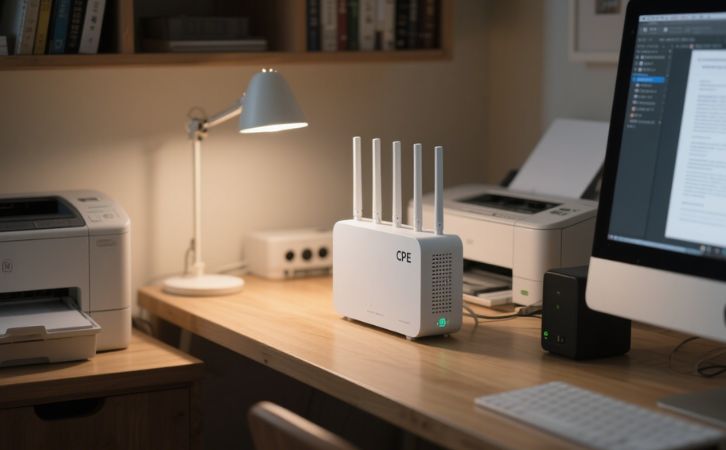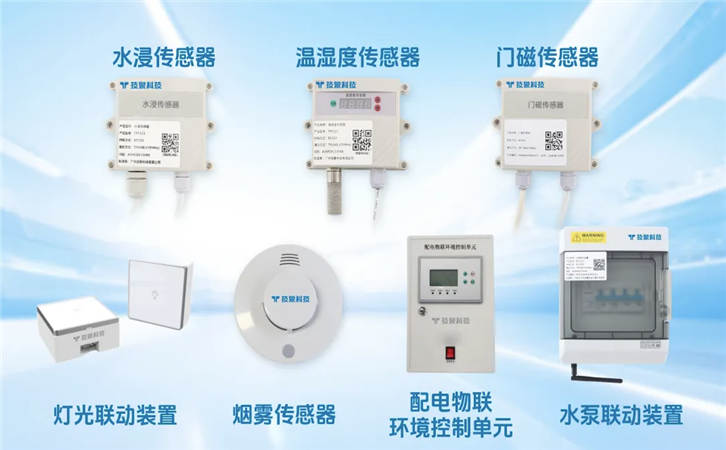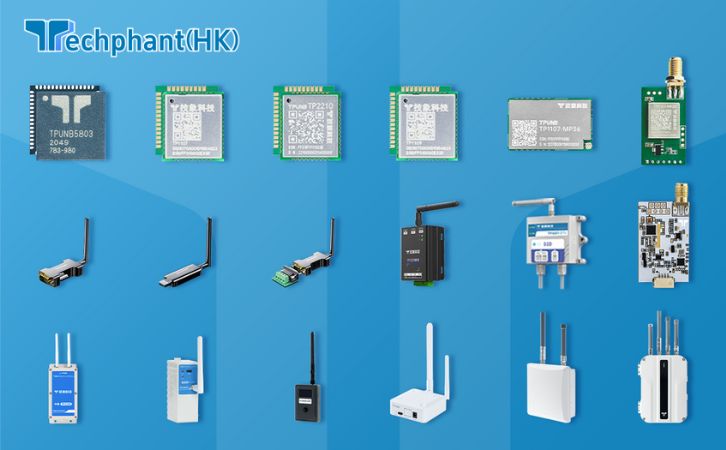Customer Premises Equipment (CPE) has undergone a remarkable evolution, transitioning from simple routers providing internet connectivity to advanced IoT gateways that orchestrate complex ecosystems of connected devices. As the Internet of Things (IoT) reshapes industries, CPE has adapted to meet the demands of smart homes, enterprises, and industrial applications, integrating multiple protocols, edge computing, and enhanced security. This transformation reflects the growing complexity of network requirements and the need for seamless integration of IoT devices with cloud services. This article explores the journey of CPE from its origins to its current role as a cornerstone of IoT connectivity, delving into its technical advancements, applications, challenges, and future directions.
I. The Origins of CPE: Traditional Routers and Modems
In its early days, CPE primarily consisted of modems and routers designed to connect homes and businesses to the internet. Modems, introduced in the 1990s, converted analog signals to digital, enabling dial-up and later broadband connectivity via DSL or cable. Routers, built on standards like IEEE 802.11 (Wi-Fi), extended this connectivity by creating local area networks (LANs), typically supporting a handful of devices with data rates of 11 Mbps (802.11b) to 54 Mbps (802.11g). These devices focused on basic functions: IP routing, DHCP, and NAT (Network Address Translation), with limited processing power and single-protocol support (e.g., Ethernet or Wi-Fi).
Early CPE operated in the 2.4 GHz band, with ranges of 20–50 meters indoors, and consumed significant power, often requiring constant mains power. Security was rudimentary, relying on WEP encryption, which was prone to vulnerabilities. Configuration was often manual, requiring technical expertise, and interoperability with emerging IoT devices was nonexistent. While effective for basic internet access, these devices lacked the flexibility and scalability needed for the diverse, low-power, and protocol-rich IoT ecosystems that emerged in the 2010s, prompting a shift toward more advanced CPE designs.
II. The Rise of IoT Gateways: Multi-Protocol and Edge Computing
The advent of IoT necessitated a new breed of CPE: IoT gateways capable of supporting diverse devices and protocols. Unlike traditional routers, IoT gateways integrate multiple radios—Wi-Fi, Zigbee, Z-Wave, Bluetooth Low Energy (BLE), and LoRaWAN—to connect heterogeneous devices like smart sensors, cameras, and actuators. For example, a modern CPE might use Zigbee to communicate with low-power smart bulbs and Wi-Fi to relay data to a cloud platform via MQTT, ensuring seamless interoperability. Chipsets like Qualcomm’s IPQ807x or Nordic’s nRF5340 enable this multi-protocol support, with dual-core processors handling concurrent tasks.
Edge computing is a defining feature of IoT gateways, allowing local data processing to reduce latency and cloud dependency. For instance, a gateway might analyze motion sensor data locally to trigger a smart lock, consuming less than 100 mW compared to 1 W for cloud-based processing. Advanced CPE also supports software-defined networking (SDN), enabling dynamic traffic prioritization for time-sensitive IoT applications, such as real-time health monitoring. Security has improved with WPA3, TLS for MQTT, and DTLS for CoAP, though these add computational overhead. Wi-Fi 6/6E, offering up to 9.6 Gbps and support for dozens of devices, has further enhanced CPE’s role in dense IoT environments.
III. Applications Across Smart Homes and Beyond
IoT gateways have expanded CPE’s applications across smart homes, enterprises, and industrial settings. In smart homes, CPE serves as the central hub, connecting devices like thermostats, security cameras, and smart speakers. For example, a gateway might use Z-Wave to control lights, Wi-Fi for video streaming, and MQTT to send alerts to a smartphone app, creating a cohesive user experience. In enterprises, CPE supports smart offices by integrating HVAC sensors, access control systems, and IP phones, with edge computing enabling real-time analytics for energy optimization.
Industrial IoT (IIoT) leverages CPE for automation and monitoring. In a factory, a gateway might connect PLCs and sensors via OPC UA or MQTT, relaying data over a private 5G network for predictive maintenance, with latency as low as 1 ms. Smart cities use CPE for applications like traffic management, where gateways aggregate data from LoRaWAN-based sensors to optimize signals, reducing congestion. These applications highlight CPE’s ability to bridge local IoT networks with cloud platforms, supporting scalability (thousands of devices per gateway) and energy efficiency for low-power protocols like NB-IoT or Sigfox.
IV. Challenges in CPE Evolution
The evolution of CPE into IoT gateways introduces several challenges. Interoperability remains a significant hurdle, as IoT devices often use proprietary protocols, requiring gateways to support multiple standards, which increases hardware complexity and cost. For example, a multi-radio CPE might cost $200–$500, compared to $50 for a basic router. Security is a critical concern; as gateways handle sensitive IoT data, they are prime targets for cyberattacks, as seen in incidents like the 2016 Mirai botnet. Implementing robust security (e.g., secure boot, OTA updates) on resource-constrained hardware is challenging and can impact performance.
Power consumption is another issue, particularly for CPE supporting low-power IoT networks like LoRaWAN. While gateways are typically mains-powered, managing low-power protocols requires efficient radio scheduling to avoid draining connected device batteries. Scalability also poses challenges; handling thousands of IoT devices requires sophisticated firmware to manage data routing and avoid bottlenecks. Finally, user experience can suffer if configuration interfaces are complex or if cloud dependency causes delays during internet outages, necessitating hybrid local-cloud architectures and intuitive management tools.
Conclusion
The evolution of CPE from traditional routers to IoT gateways reflects the growing demands of connected ecosystems, enabling seamless integration of diverse devices in smart homes, enterprises, and industrial applications. By incorporating multi-protocol support, edge computing, and advanced security, modern CPE bridges local IoT networks with cloud services, powering applications from home automation to smart cities. However, challenges like interoperability, security, and power efficiency require ongoing innovation in hardware design, protocol standardization, and software optimization. As technologies like 6G, AI-driven networking, and standards like Matter advance, CPE will continue to evolve, solidifying its role as the backbone of IoT connectivity and driving the future of smart ecosystems.



